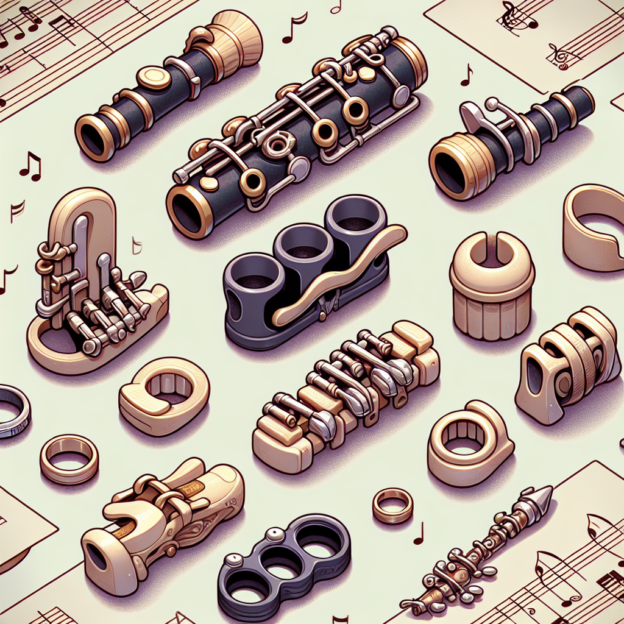The Importance of Clarinet Thumb Rests
A good thumb rest can make all the difference when you're playing the clarinet for hours on end. It's one of those parts you may not think much about—until it's uncomfortable. Clarinet thumb rest designs don't just support the weight of your instrument; they can impact your comfort, posture, and even your technique.
Types of Clarinet Thumb Rests
When we talk about clarinet thumb rests, there are several types to consider. Fixed thumb rests come standard on most clarinets. These are usually molded into the metal or plastic body and are non-adjustable. While they work well for many players, not everyone feels at ease with them. Sometimes, they're just not in the right spot for your hand size, which can lead to unnecessary strain or fatigue.
Enter the adjustable thumb rest. These designs allow you to change the placement so it fits your hand perfectly. Think of it as customizing a pair of shoes—why settle for something that doesn't quite fit? Adjustable thumb rests are a popular choice for growing students, as they can accommodate changing hand sizes or preferences over time. Brands like Martin Freres have really improved these designs with their focus on comfort and easy-to-use adjustments.
| Thumb Rest Type | Features | Best For |
|---|---|---|
| Fixed | Non-adjustable, standard on most clarinets | Players comfortable with standard positioning |
| Adjustable | Customizable placement | Growing students, players needing personalized fit |
| Padded/Cushioned | Extra support, pressure absorption | Players with thumb pain, long practice sessions |
| Ergonomic | Contoured to thumb shape, various materials | Advanced players, those needing extra comfort |
| With Neck Strap Ring | Redistributes weight to neck/shoulders | Standing performances, players with physical limitations |
Padded Thumb Rests for Pain Relief
If you struggle with thumb pain, you might want to explore padded or cushioned thumb rests. These add-ons, often made from rubber or silicone, slip over your current thumb rest to provide extra support. It's a small change, but many players swear by it—especially during long practice sessions. The padding really absorbs a lot of the pressure, letting you focus on your music instead of your discomfort.
Ergonomic Designs for Advanced Players
For those with more specific needs, ergonomic designs are worth considering. These are carefully shaped to follow the natural contours of your thumb, reducing strain and improving hand position. Some are even made of unique materials like wood or high-quality composites, which can enhance both the feel and the look of your instrument. These specialized designs can often be found on professional clarinets from well-known brands like Martin Freres, who focus on both style and functionality in their instruments.
The Neck Strap Option
Another modern option is the thumb rest with a ring for a neck strap. This design lets you shift the instrument's weight from your thumb to your neck or shoulders, making it easier to handle the clarinet's weight. It's incredibly helpful for players who perform standing up a lot or have physical conditions that make holding the clarinet more challenging. Some experienced clarinetists find this option very useful for staying comfortable during long performances.
Choosing the Right Thumb Rest for You
How do you know which one is the best fit for you? Start with your playing habits and physical needs. Are you practicing for hours at a stretch? Then a cushioned or padded rest might be your best friend. Do you prefer maximum control over your setup? Adjustable or ergonomic options could be worth exploring. Whatever you choose, pick a design that feels comfortable and supports good hand posture to avoid long-term issues.
Material Matters in Thumb Rest Design
It's also worth noting that thumb rests aren't all made equal in terms of materials. While most beginner models use basic plastic or metal, higher-end designs often incorporate advanced composites or polished finishes for better durability and visual appeal. Martin Freres clarinets, for instance, are known for using high-quality materials, ensuring your investment lasts a long time. An upgrade to your thumb rest doesn't just improve comfort; it can add a touch of sophistication to your instrument.
Installation Tips for Thumb Rests
One aspect you don't want to overlook is installation. While many thumb rests are easy to attach and remove, consider consulting a technician if you're unsure. Some adjustments might require additional tools, especially for professional models. A good clarinet repair specialist (yes, like me!) can help you make sure everything's set up properly—after all, the tiny details matter in the long run.
If you're the DIY type, there are even adjustable thumb rests that come in kits, complete with instructions for easy installation. These can be a fun weekend project for those looking to enhance their setup without any major commitments. Manufacturers often include helpful guidelines, but if you hit a snag, reach out to someone who knows their way around clarinets.
The Evolution of Clarinet Thumb Rests
Clarinet thumb rest designs have improved significantly over the years, driven by the increasing need for comfort and versatility. These small components may not seem flashy, but they play a big role in helping you perform your best. Whether you're a budding musician or a seasoned performer, there's no shortage of options to explore. And let's be honest—sometimes, even a minor tweak to your gear can reignite your passion for playing.
Conclusion: Upgrading Your Thumb Rest
So, the next time you pick up your clarinet, take a moment to examine the thumb rest. If it's not working for you, it may be time for an upgrade. From adjustable settings to ergonomic designs crafted by experts, there's something out there that can make playing the clarinet just that much sweeter. Keep your hands happy, and let your music flow effortlessly!
Table of Contents
- The Importance of Clarinet Thumb Rests
- Types of Clarinet Thumb Rests
- Padded Thumb Rests for Pain Relief
- Ergonomic Designs for Advanced Players
- The Neck Strap Option
- Choosing the Right Thumb Rest for You
- Material Matters in Thumb Rest Design
- Installation Tips for Thumb Rests
- The Evolution of Clarinet Thumb Rests
- Conclusion: Upgrading Your Thumb Rest







